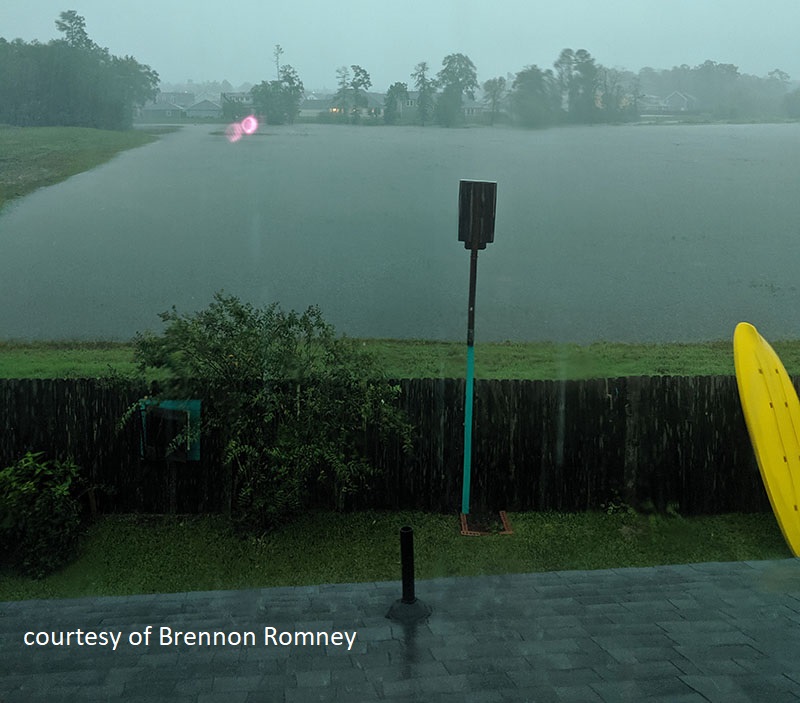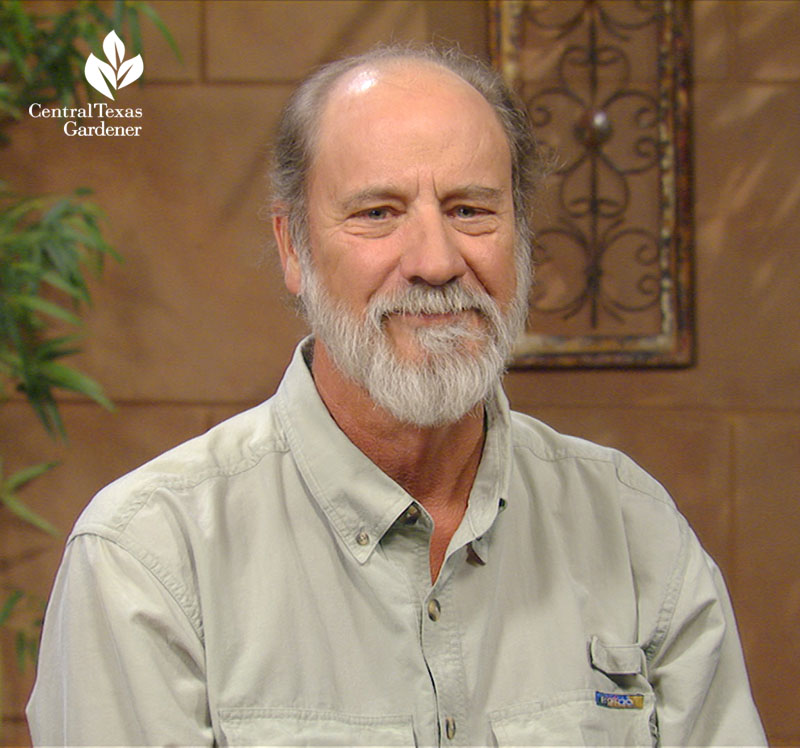September 26, 2019
Why Plant for Pollinators in Weather Challenge
Austin’s hottest September on record following weeks of drought and temps topping 100° (still tallying three-digits first week of fall) has left bereft gardens, frantically shedding trees, and desperate wildlife in its wake. At the same time, just hours from my house, Tropical Storm Imelda destroyed homes and lives.
Near The Woodlands in Houston, Brennon Romney’s home and habitat garden didn’t wash away, but the field behind his house became temporary lakefront property after a quick 16” of rain.

He slogged through the edges to discover an opportunistic Gulf Coast toad awaiting a meal from scurrying insects.

In May, we answered Chris Hazard’s question about millipedes collecting on his exterior walls. At that time, with all the rain, Travis County Extension entomologist Wizzie Brown told us they were escaping saturated soil.

Now, gregarious millipedes are wandering around inside my house. This time, they’re seeking moisture and humidity indoors after weeks of dry soil. In their natural leaf-litter habitat, these herbivores are valuable garden scavengers. I gently gather them up and deposit into a moist, shady container plant on the patio. On my clay soil, some tiny house crack has allowed access.
Wildlife are desperate for water in CTX. A thirsty wren nicked Susan Doss’ euphorbia. In fact, all wildlife go after our succulents in dry times like this. And the plants will recover!

Every evening, I refill the big birdbath (bees and wasps drink along the edges) along with multiple vessels of all sizes for tiny creatures. A large plant saucer even works. Anything, folks, though they’ll still go after your plants.
Challenging weather makes it even more important to plant for the habitat highway. This week, meet Certified Master Naturalist Drake White, founder of The Nectar Bar, a native plant landscaping company in San Antonio. She also sells native plants and conducts workshops.

A champion for wildlife habitat since she discovered a Black Swallowtail butterfly caterpillar on her fennel, she’s a hands-on educator to step us through easy ways to turn our gardens into year-long habitats.

Watch now!
Drake’s also the chief docent for San Antonio’s 4th annual Monarch Butterfly & Pollinator Festival coming your way October 12-20.

Monika Maekle, founder of Texas Butterfly Ranch, an educational resource, notes that the weeklong celebration of science, citizen science, art, and education, unfolds in venues across the city.

Along with art, children’s activities, educational forums, butterfly release, and People for Pollinators Parade, NPR’s John Burnett joins the “Butterflies Without Borders” panel discussion. Get all the details.
Drought, fungal disease and last winter’s late freeze continue to impact our fruit trees. Viewers are asking, “Should we fertilize our fruit trees this fall to help them out?”

“No,” says Jim Kamas, Texas A&M AgriLife Extension fruit specialist. We don’t want to encourage new growth as (believe it or not) our first frosts are on the horizon.

He explains when to fertilize, why a persimmon’s dying, and what’s troubling a fig tree. Watch now.
Indoor gardeners face their own problems with succulent plants. Monique Capanelli of Articulture Designs illustrates how to diagnose.

Here’s an echeveria that doesn’t have enough light.

But this aeonium is suffering from sunscald.

Crinkly leaves indicate a lack of water, while black, rotting stems indicate too much.

This echeveria’s problems stem from improper watering: superficial drinks that create too much humidity under the leaves without truly supporting the roots.

Watch now to see her examples in action!
On tour in San Antonio, Christine and Richard Alcorta’s cinder block vegetable garden on rocky soil did the trick to attract pollinators for year-long organic harvests.



Richard cut wine bottles and engineered an artistic waterfall that instantly attracted wildlife to the sound of running water.

Watch their story now!
Thanks for stopping by! See you next week, Linda
tags:

